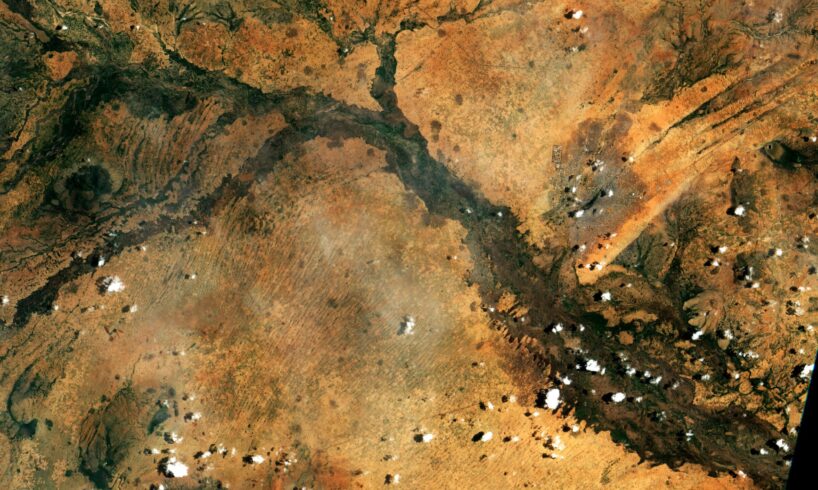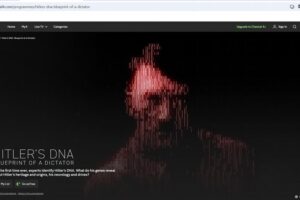
Sudan’s long, fragmented war entered a new and deadly phase in October 2025, when the Rapid Support Forces seized El Fasher, the capital of Darfur. The city’s fall followed 18 months of siege and famine — a brutal climax in a conflict that has already displaced millions.
Written by
Anastasiia Marushevska
Satellite analysis from Yale’s Humanitarian Research Lab has provided evidence of mass killings of civilians following the Rapid Support Force (RSF) takeover. Yet the battle for El Fasher is only one part of a much larger story — a war driven not just by Sudan’s internal rivalries but also by the growing involvement of global powers, from Moscow to Abu Dhabi.
For this article, we spoke with Nathaniel Raymond from Yale University’s Humanitarian Research Lab, which has spent years analysing global conflicts through satellite imagery and open-source data, including extensive research on Sudan. We also interviewed Yurii Oliinyk from the Centre for African Studies, who discussed the roles of Russia and Ukrainian special forces in the conflict.
The capture of El Fasher and the mass killings of October 2025
In October 2025, Sudan returned to international headlines when RSF forces captured El Fasher, the capital of the Darfur region. The city had been under siege for about 18 months, with heavy fighting since 2023 causing famine and a relentless humanitarian crisis. The fall of El Fasher only deepened the suffering in Darfur, as the RSF has blocked international aid from reaching the city and surrounding areas.
Rapid Support Forces or RSF are a powerful paramilitary group in Sudan, officially created in 2013 but with roots in the Janjaweed militias responsible for atrocities during the Darfur genocide in the 2000s.
The Humanitarian Research Lab (HRL) at Yale School of Public Health documented mass killings of civilians in El Fasher in late October 2025. In recent years, HRL has been conducting ongoing research using satellite imagery and open-source data to monitor wars and conflicts around the world. Its investigations have, for example, helped identify hundreds of Ukrainian children deported to Russia and find the locations where they are being held and militarised.
Satellite imagery and analysis confirm the presence of bodies and burned vehicles in El Fasher, Sudan. Source: HRL.
HRL shows that after the Rapid Support Forces seized full control of El Fasher on 26 October 2025, satellite and open-source data showed that mass killings of civilians continued for several days.
Satellite images showing the aftermath of mass killings near Al-Saudi Hospital in El Fasher — dead bodies and blood. Source: HRL.
By 31 October 2025, at least 31 clusters of bodies had been identified in and around El Fasher, including near hospitals, universities and residential areas. Many of these sites overlap with what were previously designated humanitarian or civilian zones, suggesting deliberate targeting. Satellite imagery shows reddish traces — likely blood — that later disappear, along with evidence of bodies being removed, consistent with mass executions and disposal operations. By 1 November, HRL reported that most civilians remaining in El Fasher were likely either trapped or killed.
Satellite images show the appearance of red spots (bodies) and their disappearance after a few days. Source: HRL.
Nathaniel Raymond, Executive Director of the Humanitarian Research Lab, told Ukrainer International that the war in Sudan is not a single conflict but a series of regional wars unfolding at the same time — each with its own actors and shifting alliances. Groups that were once fierce enemies now sometimes fight side by side. For instance, in the Blue Nile region, the Sudan People’s Liberation Movement/Army-North, consisted largely of the Ingessana tribe and led by Malik Agar — once an opponent of the Sudanese Armed Forces — is now fighting alongside them.
“When I first started working on Sudan, I saw the SAF fighting the Ingessana and many other groups. Now, the Ingessana tribe is fighting alongside the SAF — a sign of how there are multiple regional conflicts with multiple actors which sometimes are allies and sometimes fight each other.”
Raymond also notes that the intensity of fighting in Sudan often follows the rhythm of the seasons. When the rains end and the ground hardens, the terrain becomes easier to move across — marking the start of what fighters call the “fighting season,” which usually begins in October or November.
Tactically, the war in Sudan is a mix of ambushes, sieges and brutal house-to-house combat in urban areas. Both sides strike in waves, attacking when their opponents are on the move or resting, often relying on surprise. The RSF fights, in Raymond’s words, “like hyenas” — surrounding their enemies and wearing them down through encirclement and siege tactics. The Sudanese Armed Forces, by contrast, depend on heavy weaponry, using artillery and air strikes to crush resistance rather than surround it.
What other countries are involved in the war in Sudan?
Although Sudan’s current conflict is primarily a civil war between two domestic forces, experts say several foreign powers are also involved — supporting one or both sides, much like Russia is today.
Russia has had a presence in Sudan for decades, taking advantage of political instability and weak governance to back authoritarian regimes and extract resources. The Kremlin maintained close ties with former dictator Omar al-Bashir, supplying weapons and private military contractors while Russian-linked companies were involved in illicit gold mining and other shadow economic schemes.
Omar Hassan Ahmad al-Bashir, Addis Ababa, Ethiopia, Jan. 31, 2009. SourceL U.S. Navy photo by Mass Communication Specialist 2nd Class Jesse B. Awalt/Released
According to Yurii Oliinyk from the Centre for African Studies, both Russia and China have been working to preserve their influence in Sudan since Bashir’s fall. He explains that one of Moscow’s key objectives is to secure a lasting military foothold in the region — particularly by establishing a naval base on the Red Sea.
“There have been several attempts to establish a Russian military base on the Red Sea,” says Yurii Oliinyk. “Each new government promises, ‘All right, we’ll do it,’ but then distances itself from Moscow. Turkey and other countries step in, the Sudanese authorities try to manoeuvre between them, and the project keeps being postponed.”
Oliinyk also notes that Sudan serves as an important transit hub for Russian mercenaries moving towards the Sahel and West Africa. Many are stationed in Sudan itself, including fighters from the Wagner Group and the newly formed African Corps. Both are deeply involved in illegal gold mining and other shadow markets, as well as in fuelling ongoing conflicts.
Russia has long supported the Janjaweed and, later, the Rapid Support Forces — groups responsible for years of mass atrocities. “It’s important to understand that both sides in this civil war can switch foreign patrons as it suits them,” Oliinyk adds. “Although the Janjaweed have tended to stay consistently pro-Russian.”
Ukraine’s Defence Intelligence (HUR) has never officially confirmed that its special forces were active in Sudan. But investigations suggest that, in 2023, Ukraine managed to establish a presence there on the side of the country’s central government — the Sudanese army, led by General al-Burhan. Ukrainian troops are believed to have taken part in operations against Russian mercenaries from the Wagner Group and their local allies, with drone operators and snipers among those involved. According to Yurii Oliinyk, Russia later improved its relations with Sudan’s government, which led to a decline in Ukraine’s activity in the region.
Source: Wikimedia.
In January 2025, US Permanent Representative to the UN Linda Thomas-Greenfield confirmed Russia’s support for both sides and accused it of fuelling the conflict in Sudan:
“This Council met just two months ago to discuss a resolution calling for a nationwide ceasefire, increased civilian protection, and unhindered flow of aid. Fourteen Council members approved the text. And yet, Russia chose obstruction: standing alone as it voted to imperil civilians, while funding both sides of the conflict – yes, that’s what I said: both sides.”
However, Russia’s involvement is overshadowed by that of the main sponsor of the Rapid Support Forces — the United Arab Emirates. The UAE denies being involved in the war, but according to The Wall Street Journal, US intelligence found that Emirati support for the RSF sharply increased in 2025. This included supplies of Chinese-made drones, light weapons, machine guns, vehicles, artillery, mortars and ammunition.
Experts point to several reasons for the UAE’s interest in Sudan, but the main one is its ambition to project power in a region dominated by larger players such as Saudi Arabia, Iran and Turkey.
Neighbouring countries have also become involved. As Yurii Oliinyk explained, Egypt — despite its occasional tensions with Sudan — still views it as a potential partner. Ethiopia, on the other hand, sees Sudan as a rival and has an interest in keeping the conflict going.
Sudan’s war has long ceased to be a purely domestic power struggle. It has become a complex battleground where regional and global interests collide — from Russia’s mercenary networks and illicit mining to the UAE’s drive for influence across the Red Sea corridor.
To learn more about the background to the current war in Sudan, read the first article in this series.
The material is prepared by
Founder of Ukraїner:
Bogdan Logvynenko
Author,
Editor-in-Chief of Ukraїner International:
Anastasiia Marushevska
Content manager:
Kateryna Minkina
Coordinator of content managers:
Kateryna Yuzefyk
Coordinator of Ukraïner International:
Yuliia Kozyriatska





